Women Who Choreograph: A Taiwanese round-up - Vancouver Ballet Society
- Home
- Features 2020 - 2023
- Women Who Choreograph: A Taiwanese round-up

By David Mead
Taiwan has never been short of female choreographers. Dance was historically made by women, who often led their own companies, too. The country did not face the issue of lack of female opportunities found in many other parts of the world, issues that now are quite rightly a hot topic for debate. Indeed, if anything, for most of the 20th century Taiwan had the opposite problem. Lin Hwai-min was something of an exception when he emerged with Cloud Gate Dance Theatre in the 1970s. In recent years, attention has very much shifted to the men, however, a trend that started with Lin’s now successor, Cheng Tsung-lung. But the women are still out there making work, making their mark.
I Well-known overseas
One of the most active and successful choreographers today is Lin Mei-hong, although she is far better known in German-speaking Europe, where she has worked for many years, than at home. Now approaching her sixties and presently dance director at the Landestheater Linz in Austria, she has also had lengthy spells directing at Theater Plauen, Ballett Dortmund and Tanztheater Darmstadt.
Lin trained extensively abroad, at the Accademia Nazionale di Danza in Rome, then at the Folkwang Hochschule in Essen. Rich in cross-cultural and cross-genre elements, her works tend to be daring and full of unfettered expression. Bausch-like, she is not afraid to have her dancers shout or scream in productions.
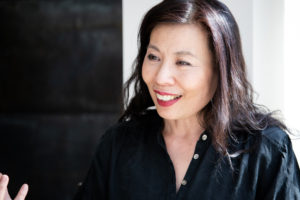
Lin is noted for drawing inspiration from literary text. Among her best-known works is Schwanengesang (Swan Song, 2009), adapted from Belgian author Georges Rodenbach’s 1892 novel, Bruges-la-Morte, and which gained rave reviews on a rare return to Taipei with Tanztheater Darmstadt in 2010. The rather dark story tells of a widower trapped by the past and denying reality of his loss, Lin homing in on his longing, illusion, madness and depression. “The point isn’t in the story itself,” she once explained. “What I’m really interested in is people’s inability to let go, in the kind of idea so powerful that it makes someone seek endlessly, even beyond death.”
There is plenty of psychological drama in other works too. There may be swans, male and female, but her Swan Lake (2015) is no straight retelling of the classic. Instead, Lin turns her attention to Tchaikovsky’s inner conflicts, his traumatic relationship with his mother, his homosexuality and crushing depression. In Marie Antoinette (2019), Lin only touches marginally on the French Revolution itself, preferring to ask who this princess really was and why she had to die on the guillotine, drawing a portrait of a woman who failed to adapt to the circus she found herself part of.
Taiwan-based Lin Li-chen’s choreography also plays well overseas, especially in France. While the now 69-year-old’s creations are few and far between, they come on a grand scale. As the fascinating 2014 documentary The Walkers illustrates, her choreography, its imagery and themes, are very closely tied to local spirit and culture, nature, religious rituals and ceremonial rites; indeed, to her whole philosophy of life.
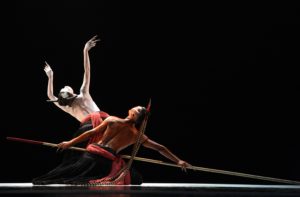
Typical is Song of Pensive Beholding (2009), the title a reference to the fact that we cannot help but reflect outwardly what we see and feel in our hearts. It is a journey into the fantastical and the soul, the dance telling how the White Bird, a spirit engaged to be married to the Earth, betrays her vows in a tryst with a member of the Eagle race. The dancers move with exquisite precision, mostly very slowly indeed. Yet when it’s called for in a battle scene, they burst into dramatic action, swirling around each other like vultures circling their prey.
II Speaking of today’s Taiwan
While more than ever seeing themselves as very much Taiwanese, the generations that followed Lin Li-chen feel less burdened than their predecessors to dwell on local themes or history, or to follow the aesthetics of the past. Often adopting a dance theatre approach, they are fearless in embracing everyday issues. Raised in a society freed of the restrictions of the past and where freedom of speech is valued, they are sometimes outspoken, sometimes political, as they speak of today’s Taiwan and personal experiences in it.
Among the most forthright is another graduate of the Folkwang School, Lai Tsui-shuang, who told me recently she believes dance should be an artistic force for social action. “In order to make dance more meaningful, I create work based on issues in society, to help minorities be heard. I have to be brave. Dance should speak out. Those who live in the dark corners need to receive attention, care and help,” she said.

In a choreographic career now spanning 16 years, Lai has rarely left doubt about meaning, considering that a dash of realism is necessary if audiences are to find direct connections with and become fully engaged with her work. Typical of her approach for her Lais Creative Dance Theater is Stranger (2019), an intelligent reflection on migration and the issues of settling in a new place. A collage of scenes hints at modern issues of migration across seas and lost lives, and more subtly to conflicting thoughts and emotions in a newcomer’s mind.
Another impressive work is Sounds, Body, Memories (2016), which asks questions about memory loss. Full of gesture, it features much walking, turning and reaching out of the sort that indicates someone struggling to comprehend where they are, where something is or what they have lost. As always, there are plenty of traditional dance elements, too, notably one duet in which a woman is supported and manoeuvred by a man using only his shoulders, neck and back. In Mambo Rock (2017), she takes aim at the institution of marriage in a work that doesn’t hold back on demonstrations of emotional and physical abuse.
As long-established as Lai is Yao Shu-fen, artistic director of Century Contemporary Dance Company. A firm believer in international collaboration, she has frequently advanced exchange with Taiwan’s neighbours, notably Japanese artists from Off-Nibroll in 2011 and 2016; and in the Driving the City project in 2014, when she invited young choreographers from Japan, Hong Kong and Korea to Taiwan. Her partnerships have extended to Europe, too, memorably with Leipzig Ballet in 2015, when the two companies visited each other’s home cities, sharing a program.
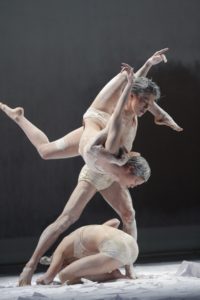
Noted for the interdisciplinary nature of her work, although she insists that happens organically rather than deliberately, Yao very much sees herself as a creator of art rather than specifically of dance. In a 2018 interview, she also reckoned she was an outlier in Taiwan’s dance scene, not least because of her outgoing, extrovert nature.
Among her best-known works are versions of Les Noces and Le Sacre Du Printemps, presented as a double bill in 2010 to mark the tenth anniversary of her company. The evening combined elements of Western and Eastern culture, with the Stravinsky scores and the paintings of noted Taiwanese artist Wang Pan-Youn, and was another dance winner of the Taishin Arts Award.
III The young ones
Among the best choreographers of the younger generation is Lin Yi-chieh, noted particularly for her work with Sun-Shier Dance Theatre. She not only draws heavily on daily life and social themes, but has a liking for using props or setting in unusual ways, as in The Place: a Puppet, a Closet, a Fantasy (2016), which features clothes coming to life and having a mind of their own. While that work can be viewed simply as unreal fiction, a more thoughtful underlying theme is the desire for autonomy, freedom and self-determination. It’s not a huge leap from there to Taiwanese politics and the similarly widely held outlook of many in society, the young especially. Animated and movie-like, funny and witty, but also bold and magical, the piece was compared to the work of noted Japanese animation director Hayao Miyazaki.
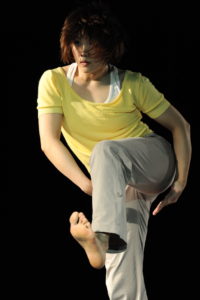
Like Lai, Lin believes dance should connect with life experiences that audiences can recognize. That is certainly the case in her earlier Have a Nice Trip (2013), a black comedy that questions whether the hubbub of a traditional Taiwanese funeral is really a chance to bid a quiet farewell to the dead or whether it is more about the relations between those who are still alive.
In 2018, Lin participated in Sun-Shier’s first Co-Dance festival, an annual weekend of programs of short pieces, often works still in progress, from upcoming artists that provides valuable opportunities for them to try out ideas in front of an audience and receive direct feedback. Her Damned Crossroads, which later re-emerged as a full-evening work, touches on longing, doubt, hesitation, choice, competition, control and confession, the whole held together by dancers scrambling for a gold envelope containing the secret to their problems. For it, Lin quite literally flips the theatre, having the audience sit on the stage while the dancers make full use of the opportunities raised by the raked seating.
The value of the support given by Sun-Shier artistic director Chang Hsiu-ping to choreographers and dancers through Co-Dance and other activities cannot be underestimated. She’s no mean choreographer either, as proved by Rolling Eyes (2019), originally inspired by a local politician seen rolling his eyes at a statement by a city mayor. Particularly interesting are references to Sigmund Freud’s famous teenage patient, Dora, and the notion that a simple action may be the combined result of many things and may have multiple hidden meanings.
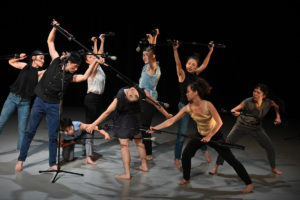
Among Chang’s other works is Take Off 2015, a piece about ordinary people breaking free of the status quo, made in collaboration with Korean choreographers Hong Eun-ji and Kim Ming-jung. They show us a social morass where there is little sense of personal identity. Trapped in a world of uncertainty, and as in Rolling Eyes making good use of text, they ask if there is any point in even trying to change the essentials of who we are.
IV Coming through
Apart from Cloud Gate, dance companies in Taiwan have a precarious existence. Most are effectively single-choreographer operations working on a project-by-project basis, picking up dancers as necessary. Almost all those choreographers face the problem of balancing making work with earning a living teaching in high school or university. A system that prioritizes whole-evening work over development affects emerging artists in particular.
Yet thanks to the likes of Co-Dance, the New Choreographer Project curated by Meimage Dance that invites overseas Taiwanese dancers home to choreograph, and Cloud Gate’s Art Makers’ Project that provides resources for young artists to develop their creative ideas without the pressure of performance, there is reason to be hopeful. New choreographers do continue to come through.
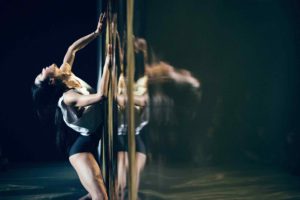
One to watch right now is a former dancer with Batsheva Dance Company, Lee Chen-wei, who made the headlines in 2016 with Together Alone, a duet created in collaboration with Hungarian dancer-choreographer Zoltan Vakulya. Danced naked throughout, it explores trust, communication and collaboration. More thought-provoking was a solo piece, kNOwn FACE (2019). As much live installation as concert dance, it proved an incisive look at how people present themselves in close up and seek attention, not least through social media.
Of the rest, perhaps the most promising is Tung I-fen, who in 2019 did an unusual take on Bolero that attempted to break free of the dominance and structure of Ravel’s score. The result was an honourable draw.

